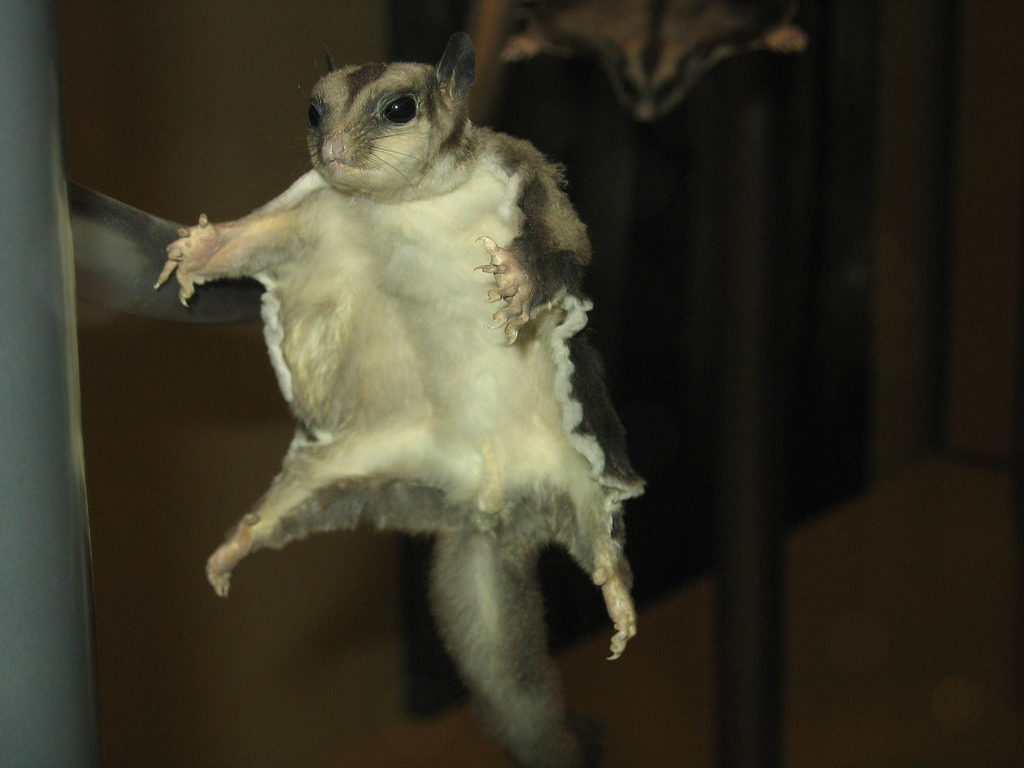
Flying squirrel is the type of rodent which can be more appropriately called as gliding squirrels, although their name is flying squirrel in real they don’t fly but glide. They glide using a thin skin between their front leg and back leg that allows them to glide through the air from one tree to another tree. In a single glide, a flying squirrel can cover more than 150 feet. They have originated around 19 to 20 million years ago. The life expectancy of the flying squirrel is about 6 years.
Flying squirrels are nocturnal and are known to make huge noise especially during the night between the sunsets and have a high sense of smell. They can enter the attics through small cracks and crevices by chewing up the area for wide and large entry point as they are smaller than the gray squirrel. The typical habitat of the flying squirrel is inside hardwoods.
Let’s have look at some of the evidence,
Students report flying squirrel infestation in Terraces
The Office of Facilities is working to address student reports that flying squirrels have been scurrying around in the Terraces Residence Halls at Ithaca College.
The reports of flying squirrels were in Terraces 6 and 9. Facilities addressed the problem by sealing off where the squirrels had entered, said Ernie McClatchie, executive director in the Department of Facilities, Grounds and Transportation. Facilities first received reports of flying squirrels in Terrace 9 in mid-November and from Terrace 6 in early December. McClatchie said this is the first time he is aware that squirrels have accessed the dorms and were reported to Facilities.
One of the students who filed a report to Facilities, sophomore Zachary Ashcraft, said the issue first arose Nov. 26 when he heard a rustling noise coming from under his bed. Two weeks later, he heard the same sound again, and Ashcraft and a friend used a granola bar to lure out and catch a glimpse of what he thought was a mouse.
Ashcraft’s friend called the Office of Public Safety and Emergency Management, who told Ashcraft that there had been issues of flying squirrels in Terrace 6. Ashcraft was told by Public Safety to put in a work order with Facilities. Facilities put a trap in Ashcraft’s room three days later, and the trap failed to catch the squirrel, Ashcraft said. Facilities came back a day later to fill in the hole the squirrels were entering in from, and Ashcraft has not had issues with flying squirrels since.
Sophomore Julia Driscoll also said she experienced issues with flying squirrels; though, for her, the response from Facilities was not as fast. Driscoll said that the Sunday after Thanksgiving break, Nov.
Atkins’ roommate saw four squirrels in his room at one time Dec. 3, and Atkins said he was told by maintenance that the squirrels got in through the area surrounding the pipes in the walls. 25, she heard what sounded like a mouse, which was caught the day after. That same day, however, while she was at her desk, a flying squirrel jumped onto it and ran off.
Hungryflying squirrels strip, eat bark from pecan trees
L
Many growers have recently called about the bark being stripped from their trees. This normally occurs on smooth-barked limbs or central leaders 3 inches or less in diameter. The culprits here
When food sources become scarce, flying squirrels will strip the bark
We at C Tech Corporation make use of Mother Nature’s gift of senses given to these pests.
CombirepelTM is the best solution to keep rodents away from human contact.
CombirepelTMis
a low-toxic, and low hazard rodent aversive. This product works on the mechanism
of repellence. It does not harm or kill the target species but generate fear or
trigger temporary discomfort within the pests that keeps the pests away from
the application.
The unpleasant experience with the product is imprinted within animal’s memory and
passed on its progeny.
CombirepelTM is available in liquid concentrate which can be diluted in paints and can be applied on the surface. It is easy to apply and dries quickly and does not volatilize.
The
product is available in lacquer form which is a direct application. The lacquer
can be applied on the furniture and other wooden accessories. It can be applied
on already installed wires and cables, polymeric utility pipes and equipment.
The product is compatible with most of the surfaces like metal, wood, concrete,
polymer; ceramic etc.
The product available in the form of masterbatch can be incorporated into the
polymeric applications like wires and cables, pipes, equipment and accessories while
they are manufactured.
Our newly developed product is in the form of a spray, RodrepelTM rodent repellent spray can be used by anyone and sprayed on the infected area. The product dries quickly and hence does not require much time to deliver the results.
The product is compliant with RoHS, RoHS2, EU-BPR, APVMA, REACH and is FIFRA exempted.
If you are facing problems from these pests then contact us on:
technical.marketing@ctechcorporation.com
Also
visit ourwebsites:
http://www.ctechcorporation.com/
http://www.rodrepel.com/
http://www.termirepel.com/
http://www.combirepel.com/
Follow our Facebook pages at:
1]
https://www.facebook.com/Combirepel-411710912249274/
2] https://www.facebook.com/Termirepel-104225413091251/
3] https://www.facebook.com/Rodrepel-120734974768048/
Follow us on our Twitter pages at:
1]
https://twitter.com/rodrepel
2] https://twitter.com/termirepel
3] https://twitter.com/combirepel


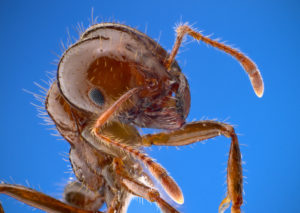
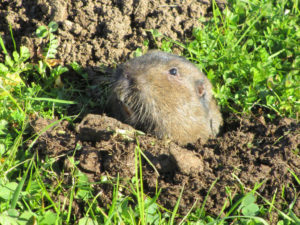
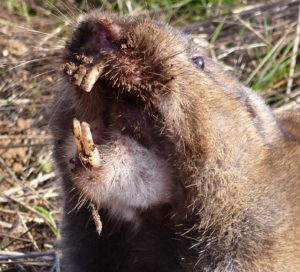
 Everyone thinks that eating well gives the body the essential nutrients when we consume fresh fruits and vegetables. This might be surprising to many people as most of the foods contain highly contaminated pesticides residue on them, there are many people make use of pesticides in foods.
Everyone thinks that eating well gives the body the essential nutrients when we consume fresh fruits and vegetables. This might be surprising to many people as most of the foods contain highly contaminated pesticides residue on them, there are many people make use of pesticides in foods.
 Birds are known to spoil the areas they come across; they cause millions of dollars of damage every year. They cause damage to buildings, statues and monuments, machinery, automobiles, roofs, ventilation systems and many more. The damage that bird fouling causes historic buildings, statues and monuments can be extensive. Birds are known to spoil things around them by leaving their droppings which are acidic in nature. Their droppings can destroy almost any material let it be wood, stone, marble, steel or iron. The accumulated droppings can also destroy the roofs and paints, clog gutters and can cause a short circuit. Over time, the acid in bird droppings will eat away at tar-based roofing materials. Once their droppings get dry in the powder form they get to mix with the atmosphere which is inhaled by the humans and cause fungal disease like Histoplasmosis.
Birds are known to spoil the areas they come across; they cause millions of dollars of damage every year. They cause damage to buildings, statues and monuments, machinery, automobiles, roofs, ventilation systems and many more. The damage that bird fouling causes historic buildings, statues and monuments can be extensive. Birds are known to spoil things around them by leaving their droppings which are acidic in nature. Their droppings can destroy almost any material let it be wood, stone, marble, steel or iron. The accumulated droppings can also destroy the roofs and paints, clog gutters and can cause a short circuit. Over time, the acid in bird droppings will eat away at tar-based roofing materials. Once their droppings get dry in the powder form they get to mix with the atmosphere which is inhaled by the humans and cause fungal disease like Histoplasmosis.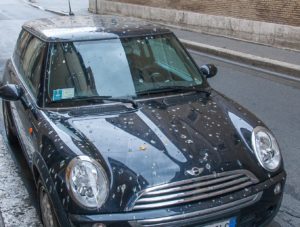
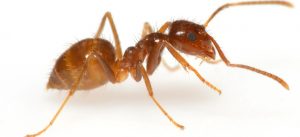
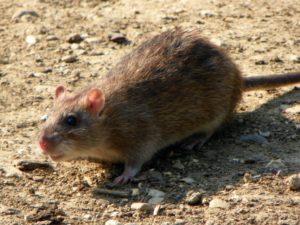 The Norway rat, roof rat, and house mouse are destructive rodent pests in and around farm facilities. This can be especially true during the winter months, as they seek food and refuge indoors. Rats and mice consume and contaminate food, gnaw on structural, mechanical, and electrical components, and weaken concrete slabs and walkways with their burrowing activities. They can also potentially carry diseases such as bubonic plague, leptospirosis, rabies, and bacterial food poisoning.
The Norway rat, roof rat, and house mouse are destructive rodent pests in and around farm facilities. This can be especially true during the winter months, as they seek food and refuge indoors. Rats and mice consume and contaminate food, gnaw on structural, mechanical, and electrical components, and weaken concrete slabs and walkways with their burrowing activities. They can also potentially carry diseases such as bubonic plague, leptospirosis, rabies, and bacterial food poisoning.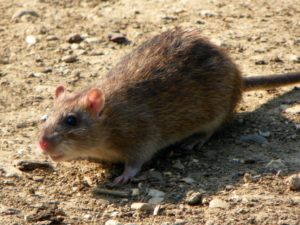 Pest menace in the agricultural sector is one of the most significant issues today in India which needs to be addressed immediately. Rodents cause millions of dollars in damages to field crops, stored grain and farm equipment every year. Apart from unpredictable rains, droughts and natural disasters insects are also the major contributors in lowering the agricultural yield every year. The damages can be categorized into two types, pre-harvest damages, and post-harvest damages. Harvest and post-harvest loss of India’s major agricultural production are estimated at Rs. 92,651crore ($13 billion) according to data published by the Ministry of food processing industries on August 9, 2016. The loss is almost three times as high as the budget for the agriculture sector.
Pest menace in the agricultural sector is one of the most significant issues today in India which needs to be addressed immediately. Rodents cause millions of dollars in damages to field crops, stored grain and farm equipment every year. Apart from unpredictable rains, droughts and natural disasters insects are also the major contributors in lowering the agricultural yield every year. The damages can be categorized into two types, pre-harvest damages, and post-harvest damages. Harvest and post-harvest loss of India’s major agricultural production are estimated at Rs. 92,651crore ($13 billion) according to data published by the Ministry of food processing industries on August 9, 2016. The loss is almost three times as high as the budget for the agriculture sector.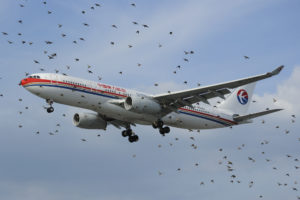 The most dangerous part of a plane when it comes to bird strikes is the engine.
The most dangerous part of a plane when it comes to bird strikes is the engine.